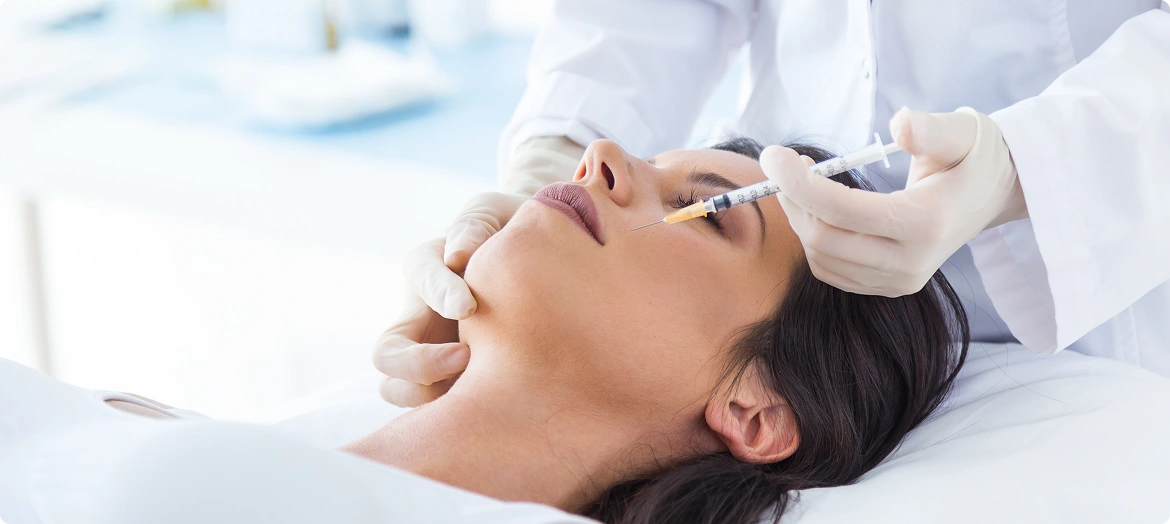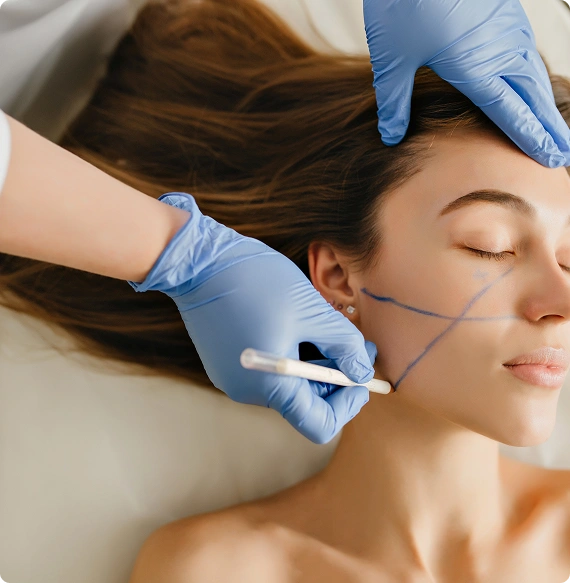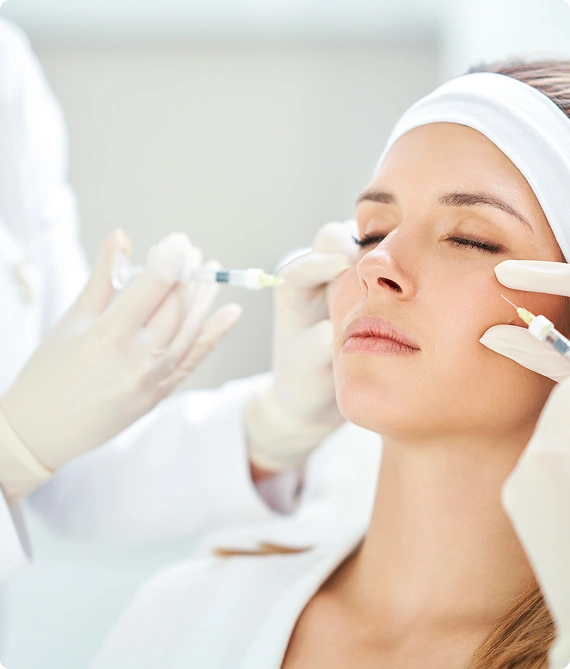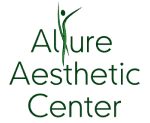Botox vs. Fillers: What’s the Difference and Which Is Right for You?
by: Mila Merenkov
In recent years, non-surgical cosmetic treatments have surged in popularity, offering individuals a way to refresh and rejuvenate their appearance without the downtime or cost of invasive surgery. At Allure Aesthetic Center, two of the most sought-after options we offer are Botox and dermal fillers—both widely used to reduce signs of aging and enhance facial aesthetics. While these treatments are often mentioned together, they work in very different ways and serve unique purposes. In this article, we’ll break down the key differences between Botox and fillers, helping you understand how each works and which may be right for your goals—with a particular emphasis on why Botox remains a top choice for many looking to smooth fine lines and maintain a youthful look.

Botox and Dermal Fillers
Botox and dermal fillers are both injectable cosmetic treatments designed to address the visible signs of aging, but they achieve this goal in fundamentally different ways. Though often mentioned in the same breath, understanding their distinct mechanisms and uses is key to choosing the right option for your needs.
Botox, short for botulinum toxin, works by temporarily relaxing targeted muscles that cause dynamic wrinkles—those formed by repetitive facial expressions like smiling, frowning, or squinting. By preventing muscle contractions, Botox smooths lines and helps prevent new wrinkles from forming.
Dermal fillers, on the other hand, are gel-like substances (most commonly hyaluronic acid-based) that are injected beneath the skin to restore lost volume, enhance facial contours, and soften static wrinkles—those present even when your face is at rest.
Despite their differences, both Botox and fillers share a common goal:
- Minimizing the appearance of fine lines and wrinkles
- Creating a more youthful, refreshed facial appearance
- Providing non-surgical, minimally invasive alternatives to cosmetic surgery
However, it’s important to note the distinct functions of each treatment:
- Botox is best for treating expression lines, such as crow’s feet, forehead lines, and frown lines between the brows.
- Fillers are better suited for addressing volume loss, such as hollow cheeks, deep nasolabial folds, and thinning lips.
Recognizing these differences can help you and your provider develop a more personalized and effective aesthetic plan.
Botox Injections
Botox injections are one of the most popular non-surgical cosmetic treatments available today, especially for individuals looking to reduce dynamic wrinkles caused by facial expressions. Botox works by temporarily blocking the nerve signals to specific muscles in the face. When those muscles are relaxed, the overlying skin appears smoother, reducing the appearance of expression lines such as frown lines and crow’s feet.
Common treatment areas for Botox include:
- Forehead lines caused by raising the eyebrows
- Frown lines between the brows (also known as “11 lines”)
- Crow’s feet around the outer corners of the eyes
- Bunny lines on the sides of the nose
- Lip lines or subtle “lip flip” enhancements
After receiving Botox, most people begin to notice results within 3 to 5 days, with full effects visible by 7 to 14 days. Results typically last 3 to 4 months, after which maintenance treatments are recommended to preserve the effect.

Botox offers a number of appealing benefits, including:
- Non-invasive procedure with no surgery required
- Quick treatment sessions, often completed in under 15 minutes
- Minimal downtime, allowing patients to resume daily activities immediately
- Preventive potential, as regular Botox use can slow the formation of new lines over time
Ideal candidates for Botox are adults in good general health who want to address moderate to severe facial wrinkles caused by muscle movement. It’s especially beneficial for those looking to maintain a youthful appearance without undergoing more invasive procedures. Whether you’re starting early for prevention or addressing existing lines, Botox is a versatile and effective option.
Dermal Fillers
Dermal fillers are injectable treatments made of gel-like substances designed to restore lost facial volume, smooth out deeper wrinkles, and enhance natural facial contours. Unlike Botox, which targets muscle activity, fillers work by physically filling in areas where the skin has thinned or sagged due to aging. This helps to create a plumper, more youthful appearance almost instantly.
Common areas treated with dermal fillers include:
- Cheeks – to restore volume and lift the mid-face
- Lips – to enhance shape, fullness, or correct asymmetry
- Nasolabial folds – the smile lines that run from the nose to the corners of the mouth
- Under-eye hollows – to reduce the appearance of dark circles or tired eyes
The most popular fillers are hyaluronic acid-based products, such as Juvederm, Restylane, and Belotero. Hyaluronic acid is a naturally occurring substance in the skin that attracts and retains moisture, making it ideal for restoring volume and hydration.
Duration of results can vary depending on the type of filler and the area treated, but most hyaluronic acid fillers last between 6 to 18 months. Some thicker fillers used in deeper areas may last longer. Keep in mind:
- Maintenance treatments are needed to sustain results
- Swelling or mild bruising can occur after treatment but typically resolves within a few days
- Not all fillers are created equal—choosing a qualified provider ensures safe, natural-looking results
Ideal candidates for dermal fillers are individuals experiencing volume loss, deeper static wrinkles, or those who want to enhance certain facial features like the lips or cheeks. While fillers can beautifully complement Botox, they are best suited for different aesthetic goals and concerns.
Big Difference
The biggest distinction between Botox and dermal fillers lies in what they treat and how they work. Botox temporarily relaxes facial muscles to reduce the appearance of dynamic wrinkles—those caused by repeated facial movements like frowning, squinting, or raising the eyebrows. In contrast, dermal fillers add volume beneath the skin to smooth out static wrinkles—those visible even when your face is at rest—and to enhance facial contours.

Here’s a breakdown of their key differences:
- Botox
- Targets muscle movement
- Best for forehead lines, frown lines, and crow’s feet
- Results appear in 3–5 days, lasting about 3–4 months
- Ideal for wrinkle prevention and smoothing expression lines
- Dermal Fillers
- Targets volume loss
- Best for cheeks, lips, nasolabial folds, and under-eye hollows
- Results are immediate, lasting from 6 to 18 months
- Ideal for restoring fullness and softening deep wrinkles
Although they serve different functions, Botox and fillers can complement each other beautifully. Many people choose to combine both treatments for a more complete facial rejuvenation. However, if you’re just getting started with cosmetic injectables, Botox is often the best first step. It’s preventive, minimally invasive, and especially effective at softening lines caused by facial expressions—making it a smart, subtle way to maintain a youthful appearance.
Which Is Right for You?
Choosing between Botox and dermal fillers depends on several personal factors, including your age, the type of wrinkles you’re experiencing, your aesthetic goals, and your budget. Understanding what you’re hoping to achieve can help guide the right approach.
Consider the following:
- Age: Younger individuals may benefit from Botox as a preventive measure, while older adults might consider fillers to restore lost volume in addition to smoothing lines.
- Type of wrinkles:
- If your wrinkles appear when you move your face (like frowning or squinting), Botox is the ideal solution.
- If the wrinkles are visible even when your face is relaxed or if you’ve lost fullness in areas like the cheeks or lips, fillers may be more appropriate.
- Desired results: If you want a subtle softening of fine lines or a refreshed look with minimal change, Botox offers a quick and effective option. For more dramatic volume enhancement or facial contouring, fillers may deliver the results you’re after.
- Budget: Botox generally costs less per session but requires more frequent maintenance, while fillers last longer but may have a higher upfront cost.
Ultimately, the best way to determine which treatment is right for you is through a consultation with a qualified provider. A licensed professional can assess your facial structure, skin condition, and goals to recommend a personalized plan that’s safe and effective.
That said, if you’re unsure where to begin, Botox is often a great starting point—especially for those noticing early signs of aging or wanting to prevent deeper lines from forming. It’s minimally invasive, quick, and delivers natural-looking results that many people love.
Botox and dermal fillers both reduce signs of aging but work in different ways—Botox relaxes facial muscles to smooth dynamic wrinkles, while fillers restore volume to treat static lines. Among the two, Botox is a trusted, non-invasive option ideal for preventing and treating expression lines with minimal downtime. To determine the best approach for your goals, consult a licensed provider who can create a personalized treatment plan tailored to your needs.
Discover the Right Aesthetic Treatment for You at Allure Aesthetic Center
Enhancing your appearance doesn’t have to be a guessing game. At Allure Aesthetic Center, we offer expert guidance and personalized Botox and filler treatments to help you achieve natural, refreshed results. Not sure which option is right for you? Schedule your consultation today and let us help you make the confident choice.
